 Mac has not been very well but is still e-mailing strong. Here are some of Mac's post war reminiscences about Guam. But first, here are some pictures paying homage to Mac, recognising all the e-mails he has sent the Beetle and how much he has contributed to the Globetrotter e-newsletter. From top left, going clock wise: Mac meeting Prince Charles when the Prince came to Washington earlier in 2006, next Mac's usual photo, then a more relaxed picture of Mac on an outing, and finally, Mac during WW2.
Mac has not been very well but is still e-mailing strong. Here are some of Mac's post war reminiscences about Guam. But first, here are some pictures paying homage to Mac, recognising all the e-mails he has sent the Beetle and how much he has contributed to the Globetrotter e-newsletter. From top left, going clock wise: Mac meeting Prince Charles when the Prince came to Washington earlier in 2006, next Mac's usual photo, then a more relaxed picture of Mac on an outing, and finally, Mac during WW2.

Guam: hafa adai – translation – it is raining again on Guam. Actually this is Guam's equivalent to Hawaii's greeting: aloha. Guam is 5,200 miles from San Francisco, 3,300 miles from Honolulu, 1,500 miles from Manila and 1,300 miles from Yokohama and eight hundred miles from the equator. It is kind of in the middle of nowhere. Now when you consider that Guam is only thirty miles long and eight miles wide at the widest, I am amazed our navigator found this little speck in this big ocean especially as there was a rumour that the navigator navigated by wetting his finder and holding it to the wind. Guam was the first and only US territory to be occupied by Japanese during World War II. The island was liberated in Aug 1944.
When I saw a sign in the Quonset hut terminal at Agana that read: “Those desiring transportation to Saipan report to the information desk,” I knew I was the South Pacific. We sped thorough Tote Village, Mong Mong, then Agana (pronounced (uh=gan-yuh) then past Tamuning, Dedeedo Village, Marbo there is an Armed Services PX, Magsaysay Village, Yigo and through the gates of Andersen AFB. (The Air Force Base is at one end of the island and the Navy Base is at other end of the island. There is a steady stream of traffic between the two as the Air Force thinks the Navy has better PX (Post Exchange – the place on a military base where you can buy everything from boots to baseballs) and the Navy thinks the Air Force has a better PX.
One of the attractions for a Guamanian to be in the service and stationed in Guam is that they can buy food in the commissary. The Guamanians in the service bought not only for themselves but for their relatives. It was only after I had been here a while that I understood the reason for the sign in commissary that read “Only eight chickens per person” I used to collect signs. Not the signs themselves but what was written on signs around the world as I am easily amused.
One of the Guamanians I worked with told me that when he got mad at his wife that instead of hitting her he goes out and hits his car. I noticed his car was kind of beat up but they all were there. They called a jeep a Guamanian Cadillac. We had an open air theatre we called the “Rain In” and some called the “Swim In”. Actually its name was “Sky View”. We even had a soft freeze ice cream stand where milk was brought over in powdered form and then recombined there. This stand opened at six thirty in the morning and at that time there was already a line waiting in the heat to get ice cream.
After a three week visit as a civilian at home I left McCool Junction, Nebraska once more in kind of a hurry. It was 27th Oct 1959. This was not by request of the sheriff but due to the urgencies of the service so packed in a hurry for Guam I packed overcoat, winter underwear and arrived in Guam sweating in my winter uniform.
My house was a three storied cement typhoon proof building with a balcony on both sides of the room. There were two doors on each side of room leading to balcony with three louvres instead of windows (wooden slats that can be opened and shut) so there is a lot of ventilation. When I checked in the commander told me to get some sleep after the long trip. Instead I decided to hitch hike around the island and see what it looked like. The guys in barracks told me to be sure and close the louvres before I took off. I was so anxious to see island that I forgot and it rained in on all the beds. It has only been recently that some of them have been speaking to me. Ha!
Each village had a religious festival that lasted two days on their villages feast day. Every house in town is open house then. Most of the cooking is done outside in a shed A Guamanian who had been in American military before he lost his leg picked me up hitch hiking and took me to his house where there was a christening. The host and hostess had been up since one o'clock preparing the pig and food. The baby was named Melchoir as he was born on the 6th of Jan and that is the Feast of The Three Men one of them named Melchoir. The other two were named Wilfred and Ivan. Tired from trip and without much sleep the drinks put me out. My host and friends put me in their car to take be back to the base. I woke up on way back and saw all these dark faces and forgetting I was in Guam wondered where in the hell I was and what I was doing there.
My new friends saw my puzzled look and told me what had happened and they invited me to visit them anytime I had time off. I would not have invited myself back but the Guamanians were very hospitable and liked the military.
A Guamanian lad with white shining teeth came up to me and took me around the different stand under the roofed market shed. He would say “this is winged beans” like our stringed beans but with four fins on each side, grown only on Guam. This is betel nut (a mild narcotic used in Indo China and that part of the world. I had seen it used in Thailand. It stains their teeth and lips. Women as well as men chewed it in the floating markets in Thailand)
We then came to a little girl about the same age as the lad and he said “this is Palau”. Palau is an island in the Carolinas and the little girl was from there. Everyone laughed including the little girl at the little boys joke. At one of the festivals I had coconut crabs. They are very like big lobsters in appearance but are difficult to find and are considered a delicacy. They are sometimes found in caves (along with Japanese soldiers that were still hiding there and did not know the war was over.)
They had a beer made from sprouts of coconut. It is called Tuba. I said the ex Guamanian GI that had picked me up the first day hitch hiking had a wooden leg. Rereading my diary notes, I see he was actually from Saipan. He had been in the Korean war and had a disability pension. He was hit in the groin and had an artificial sack for a bladder. He got $400 a month pension and had commissary privileges plus what he made from his boat fishing. They lived in the village of Toto. He had a doll of a little Guamanian wife. They lived in a Quonset hut but were building a new home.
For one meal when I visited and I did often, they had pork chops from the commissary, winged beans and rice. She was so glad I liked rice (and I do as it tasted better than our rice in the States or maybe it is my imagination.) They had two of his brother's children living with them island of Rota as Rota has no school. Students there went to a Catholic school and wore uniforms. Franciscan Capuchin Fathers were stationed in Guam.
The Diaz (another Guamanian family) had a different version of how Guam got its name. They said it was the Queen of England that gave them her name as she knew how embarrassing it was to be called the Island of Thieves. When Magellan landed, the natives swam out to the ship and took everything they could get their hands on so Magellan referred to the island as The Island of Thieves. Some Guamanians told me that the Guamanians had wanted to trade food for what they took but Magellan did not understand. We got Guam in kind of a sneaky way; during the Spanish American War one of our battleships came into the harbour and fired a shot at the Spanish f ort. The shot missed the Fort (that is the Navy for you) and the Spanish thought we were firing a salute. They had no gun powder to return the salute so they sent a messenger to try to find some powder. Embarrassing moments followed as the US troops landed and declared the island captured. I followed some years later.
If you would like to get in touch with Mac, he is happy to correspond by e-mail when he is well. His e-mail address is: <a macsan400@yahoo.com
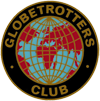
 China's rising thirst for oil has long caused consternation in the geeky circles of the oil industry, as most recognized some time ago that the growing band of Shanghainese abandoning bicycles for BMW's would mean a sharp rise in global petrol demand. With the world now well aware of this dilemma, the oil industry is pondering where it will find sufficient oil to meet China's needs.
China's rising thirst for oil has long caused consternation in the geeky circles of the oil industry, as most recognized some time ago that the growing band of Shanghainese abandoning bicycles for BMW's would mean a sharp rise in global petrol demand. With the world now well aware of this dilemma, the oil industry is pondering where it will find sufficient oil to meet China's needs. 

 Most journeys into the desert begin in Urumqi, a modern city indistinguishable from any other second tier Chinese city. Though it formed part of the original Silk Road, a journey through the desert was long considered a death sentence, and it wasn't until 1995 that a highway was erected. Though the highway allows access to the amenities of the region's cities to the tiniest desert village, some villages chose to remain closed and the highway was evidently rerouted and the villages excluded from maps to accommodate this. Ironically, those who put great store in recreating ancient methods of traversing the desert (donkey, rickshaw, et al) also rely heavily on the “shamo gonglu” highway.
Most journeys into the desert begin in Urumqi, a modern city indistinguishable from any other second tier Chinese city. Though it formed part of the original Silk Road, a journey through the desert was long considered a death sentence, and it wasn't until 1995 that a highway was erected. Though the highway allows access to the amenities of the region's cities to the tiniest desert village, some villages chose to remain closed and the highway was evidently rerouted and the villages excluded from maps to accommodate this. Ironically, those who put great store in recreating ancient methods of traversing the desert (donkey, rickshaw, et al) also rely heavily on the “shamo gonglu” highway. 
 There are also plentiful cultural activities along the route, including the remains of the “lost city” of Subashi, well-maintained mosques, and little visited museums – we had to wake the curator from a lunchtime nap to ask him to turn the lights on for us in one.
There are also plentiful cultural activities along the route, including the remains of the “lost city” of Subashi, well-maintained mosques, and little visited museums – we had to wake the curator from a lunchtime nap to ask him to turn the lights on for us in one.  In 1993, UNESCO declared the Camino de Santiago a world heritage site. It starts from the boarder of France and works it way west to the city of Santiago de Compostela covering some 750 kilometres. Originally, pilgrims had to navigate their way using the sun, moon, stars, and even the Milky Way. Getting lost was part of the journey. Today, the trail is so clearly marked that losing your way is not really an option. With shiny traffic signs, brass and tile scallop shells, and the distinct yellow arrows you'll always be pointed to Santiago.
In 1993, UNESCO declared the Camino de Santiago a world heritage site. It starts from the boarder of France and works it way west to the city of Santiago de Compostela covering some 750 kilometres. Originally, pilgrims had to navigate their way using the sun, moon, stars, and even the Milky Way. Getting lost was part of the journey. Today, the trail is so clearly marked that losing your way is not really an option. With shiny traffic signs, brass and tile scallop shells, and the distinct yellow arrows you'll always be pointed to Santiago. 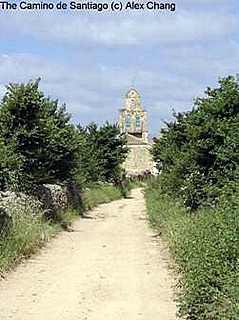 The oldest documentation of the Compostelana, the official certificate of having completed the pilgrimage, was delivered to André le Breton in the Capilla del Rey de Francia and dates back to 1321. Almost 700 years later, you can still request the Compostelana certificate, complete with your name in Latin. To be eligible you must have either walked or ridden a horse for the last 100 kilometres or bicycled the last 200 kilometres. The demand for this document has grown such that there is now a special Pilgrim's Office that will attend to your petition.
The oldest documentation of the Compostelana, the official certificate of having completed the pilgrimage, was delivered to André le Breton in the Capilla del Rey de Francia and dates back to 1321. Almost 700 years later, you can still request the Compostelana certificate, complete with your name in Latin. To be eligible you must have either walked or ridden a horse for the last 100 kilometres or bicycled the last 200 kilometres. The demand for this document has grown such that there is now a special Pilgrim's Office that will attend to your petition. 
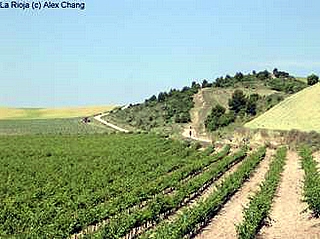
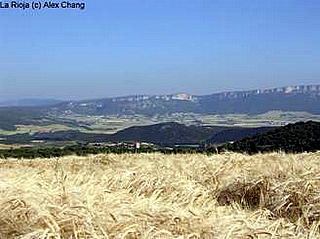
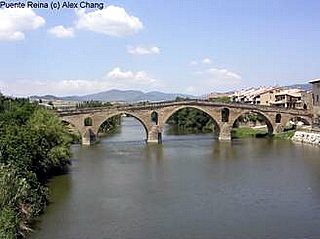 Despite a thousand years, the Camino de Santiago remains and its pilgrims continue to flow into Santiago. The Camino is an unforgettable experience that creates a special bond and camaraderie among all those who have walked it. In a world where things change so quickly, the Camino de Santiago is so refreshing as things really haven't changed so much after all!
Despite a thousand years, the Camino de Santiago remains and its pilgrims continue to flow into Santiago. The Camino is an unforgettable experience that creates a special bond and camaraderie among all those who have walked it. In a world where things change so quickly, the Camino de Santiago is so refreshing as things really haven't changed so much after all! 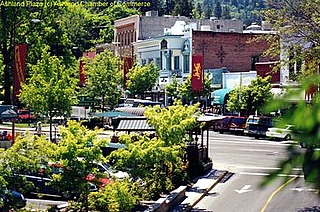 The downtown (all eight blocks) could serve as the set for Our Town. It centres on the block-on-a-side triangular Plaza and adjacent Lithia Park, which becomes more natural as one follows its creek into the mountains. Only one building is over three stories; it and 28 others are on the National Register of Historic Places. The town owns both a fibre optic network and a ski resort at nearby Mt. Ashland. A commission awards a bronze plaque to the “tree of the year.” There never will be a shopping mall in Ashland. McDonalds went broke.
The downtown (all eight blocks) could serve as the set for Our Town. It centres on the block-on-a-side triangular Plaza and adjacent Lithia Park, which becomes more natural as one follows its creek into the mountains. Only one building is over three stories; it and 28 others are on the National Register of Historic Places. The town owns both a fibre optic network and a ski resort at nearby Mt. Ashland. A commission awards a bronze plaque to the “tree of the year.” There never will be a shopping mall in Ashland. McDonalds went broke. 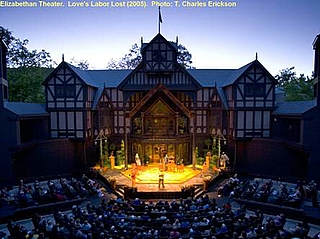 over sixty B&B's in turn-of-the-century Craftsman and Victorian homes that characterize the town and some twenty hotels and motels, including several in the downtown area.
over sixty B&B's in turn-of-the-century Craftsman and Victorian homes that characterize the town and some twenty hotels and motels, including several in the downtown area. 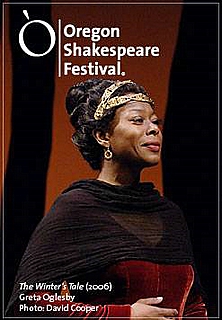 Venice and Twelfth Night. The town council stipulated boxing matches to cover the expected deficit, hoping Bowmer would not accept such an undignified linkage. Bowmer found the idea in keeping with the bawdiness of Elizabethan theatre and accepted. Ironically, the plays covered the deficit of the boxing. The Festival has continued ever since, with a few years off while Bowmer served in World War II. In 2007, the Festival will present As You Like It, On the Razzle (a variation on The Matchmaker aka Hello Dolly), The Cherry Orchard, Gem of the Ocean, and Tartuffe in the modernistic Bowmer. Three new American plays, Rabbit Hole, Tracy's Tiger, and Distracted will be in the intimate New Theatre. Romeo and Juliet, Taming of the Shrew, and Tempest will be in the half-timbered, outdoor Elizabethan.
Venice and Twelfth Night. The town council stipulated boxing matches to cover the expected deficit, hoping Bowmer would not accept such an undignified linkage. Bowmer found the idea in keeping with the bawdiness of Elizabethan theatre and accepted. Ironically, the plays covered the deficit of the boxing. The Festival has continued ever since, with a few years off while Bowmer served in World War II. In 2007, the Festival will present As You Like It, On the Razzle (a variation on The Matchmaker aka Hello Dolly), The Cherry Orchard, Gem of the Ocean, and Tartuffe in the modernistic Bowmer. Three new American plays, Rabbit Hole, Tracy's Tiger, and Distracted will be in the intimate New Theatre. Romeo and Juliet, Taming of the Shrew, and Tempest will be in the half-timbered, outdoor Elizabethan. 
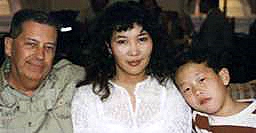 About the author: David is professor emeritus of Behavioural Science and of Humanities, California State University, and author of over 100 books and articles including Why We Fight: Theories of Human Aggression and Conflict (2005). He has been a Fulbright Scholar in Cyprus and Ukraine, a Malone Scholar in Bahrain and Saudi Arabia, worked in Australia, Singapore, and Morocco, and visited over 100 countries. He is co-founder and treasurer emeritus of Wildlife on Wheels, which provides live wild animal education programs to 100,000 Los Angeles basin children each year. He is married and has one child. Picture was taken of David and his family in the Raffles, Singapore (which is not the place it used to be, unfortunately.)
About the author: David is professor emeritus of Behavioural Science and of Humanities, California State University, and author of over 100 books and articles including Why We Fight: Theories of Human Aggression and Conflict (2005). He has been a Fulbright Scholar in Cyprus and Ukraine, a Malone Scholar in Bahrain and Saudi Arabia, worked in Australia, Singapore, and Morocco, and visited over 100 countries. He is co-founder and treasurer emeritus of Wildlife on Wheels, which provides live wild animal education programs to 100,000 Los Angeles basin children each year. He is married and has one child. Picture was taken of David and his family in the Raffles, Singapore (which is not the place it used to be, unfortunately.)  The warning identifies 16 central and eastern European countries where the TBE infected tick population is officially endemic and therefore poses a high risk to visitors who have not been immunised or taken bite prevention precautions.
The warning identifies 16 central and eastern European countries where the TBE infected tick population is officially endemic and therefore poses a high risk to visitors who have not been immunised or taken bite prevention precautions. 
 I was part of an organised tour of the Lebanon and
there were 10 of us. We left Beirut on Xmas day and headed south
via the Corniche to the port city of Sidon. On the way we passed
near to the sports complex behind which there are massive Shatila
and Shabra Palestinian refugee camps, where the massacres in the
1980's happened. In Sidon we visited the Caravanserai where
there is a collection of photographs showing the hours leading up
to and the assassination of president Hariri in February 2005;
the devastation from the 350kg car bomb has to be seen to be
believed.
I was part of an organised tour of the Lebanon and
there were 10 of us. We left Beirut on Xmas day and headed south
via the Corniche to the port city of Sidon. On the way we passed
near to the sports complex behind which there are massive Shatila
and Shabra Palestinian refugee camps, where the massacres in the
1980's happened. In Sidon we visited the Caravanserai where
there is a collection of photographs showing the hours leading up
to and the assassination of president Hariri in February 2005;
the devastation from the 350kg car bomb has to be seen to be
believed.


 would be “Don't climb the
ramparts” signs and a huge big fence to stop you, not in
Lebanon, go where you like and we did.
would be “Don't climb the
ramparts” signs and a huge big fence to stop you, not in
Lebanon, go where you like and we did.
 We spent the night in an Hermitage called St
Elysee, whose back wall is actually the rock of the mountain
behind. To get to the place we had to go down a steep mountain
road that was a sheet of ice – which was exhilarating, but the
next day we had to come out by the same way and ended up using
snow chains and taking runs at bends to get round them. We were
also supposed to do a walk here, but were forewarned about the 12
inches of mud and 2 ft of snow by another group that had tried
the walk and had to give up. Instead we went to Byblos for lunch
and then down to Jeita Grotto, a fantastic series of caves which
were brilliant. After the caves we went to Jounie and got the
cable car and funicular up to the top of the hill behind the
town, which has a giant statue of the Virgin Mary, but we just
made it for sunset.
We spent the night in an Hermitage called St
Elysee, whose back wall is actually the rock of the mountain
behind. To get to the place we had to go down a steep mountain
road that was a sheet of ice – which was exhilarating, but the
next day we had to come out by the same way and ended up using
snow chains and taking runs at bends to get round them. We were
also supposed to do a walk here, but were forewarned about the 12
inches of mud and 2 ft of snow by another group that had tried
the walk and had to give up. Instead we went to Byblos for lunch
and then down to Jeita Grotto, a fantastic series of caves which
were brilliant. After the caves we went to Jounie and got the
cable car and funicular up to the top of the hill behind the
town, which has a giant statue of the Virgin Mary, but we just
made it for sunset.
 We finished up in Beirut and first visited the
famous Corniche that runs by the sea, the place to be seen in the
1970's but now a bit tatty. Then down to Martyrs square which
is the start of the “Green Line” that divided east and
west Beirut during the war. The buildings directly on the line
have been rebuilt or restored, but you only have to go a street
or so east or west to find the evidence of 15 years of war.
We finished up in Beirut and first visited the
famous Corniche that runs by the sea, the place to be seen in the
1970's but now a bit tatty. Then down to Martyrs square which
is the start of the “Green Line” that divided east and
west Beirut during the war. The buildings directly on the line
have been rebuilt or restored, but you only have to go a street
or so east or west to find the evidence of 15 years of war.